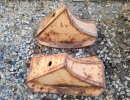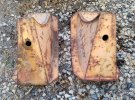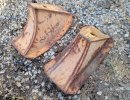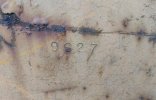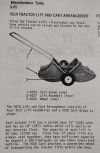1693TA
Senior Member
Running with the trench, or grease pit idea sounds interesting to me. Say a 30" wide finished trench/pit width with concrete block sidewalls atop a poured floor enclosed by a space frame clear shell. I'm thinking the tops of the sidewall(s) transition from vertical to the horizontal plane be topped with 5X5X3/4" angle steel around it's perimeter to permit two sliding, or rolling jacking beams to be utilized if needed which would be easily removable. Steps at either one, or both ends to facilitate entry/exit to the trench. This jacking beam idea comes straight from my automotive frame rack and they were used a lot lifting, twisting, and pushing things back into shape.
Around here they don't tax yard storage sheds, nor the same with a concrete floor. They do tax buildings so would need to make this appear to be a shed if elected to enclose. I don't know at this point but it would be fairly easy to fabricate an enclosure which could be easily taken down. If clear fiberglass panels such as these shown in the link were utilized with treated lumber for the space frame, the cost wouldn't be that great. A roll up door would most likely be utilized for this affair.
https://www.menards.com/main/buildi...roof-panel/1592834/p-1444424087688-c-5819.htm
I'll have to speak with the zoning board before going any further but I'm sure an open concrete pad and trench would have no effect. Don't know about laws/rules pertaining to an open trench, or even a chain guarded trench if outdoors. Enclosed would be no problem.
Little thing yet to figure out but I'm kind of favoring this approach. I have the ground needed available so may run with it.
Around here they don't tax yard storage sheds, nor the same with a concrete floor. They do tax buildings so would need to make this appear to be a shed if elected to enclose. I don't know at this point but it would be fairly easy to fabricate an enclosure which could be easily taken down. If clear fiberglass panels such as these shown in the link were utilized with treated lumber for the space frame, the cost wouldn't be that great. A roll up door would most likely be utilized for this affair.
https://www.menards.com/main/buildi...roof-panel/1592834/p-1444424087688-c-5819.htm
I'll have to speak with the zoning board before going any further but I'm sure an open concrete pad and trench would have no effect. Don't know about laws/rules pertaining to an open trench, or even a chain guarded trench if outdoors. Enclosed would be no problem.
Little thing yet to figure out but I'm kind of favoring this approach. I have the ground needed available so may run with it.

